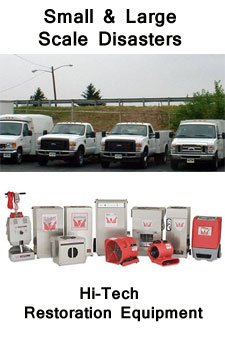Hurricanes can cause destroy properties and even lead to the loss of life due to extremely high winds and flooding, both of which are always present in tropical storms. Hurricanes are measured based on the extent of damage it causes, and it could go from category 1, which is minimal, to category 5, which is considered catastrophic. In the country, there have only been three category 5 hurricanes ever recorded in more than a hundred years. One occurred in 1935 (Labor Day Hurricane), the 2nd was in 1969 (Hurricane Camille), and the last one was in 1992 (Hurricane Andrew). Hurricane Katrina wasn’t even classified as category 5 (according to NOAA, it was category 3 and later peaked as a category 5) and yet it had brought about massive hurricane damage.
Hurricane Damage Brought about by Hurricane Katrina
In August 29, 2005, Hurricane Katrina caused flooding in New Orleans and resulted to devastating economic losses amounting to $125 billion, with about $66 billion covered by insurance. However, some reports claim the total damage cost was twice as much as the amounted stated.
1. Louisiana’s sugar industry lost about $500 million annual crop value.
2. Louisiana’s port was damaged, bringing approximately $260 million in damage.
3. Louisiana’s tourism industry suffered 70% losses.
4. New Orleans’ roads and bridges totaled $10 billion in damages.
5. Property damage to homes, cars, buildings, and public properties amounted to $60 billion.
6. A total of 770,000 people were left homeless and 1,836 dead.
Fox News reported that Hurricane Katrina destroyed more residential properties than any hurricane in recent times, with a total of about 300,000 homes no longer habitable in the 93,000 square miles of vicinity that it hit in 2005.
How to Reduce or Prevent Hurricane Damage
There is more than one way to decrease hurricane damage. After several attempts to “defuse” these strong storms, there are already programs that have been developed precisely to serve as mitigation steps. This includes more advanced warning systems that are equipped with real-time satellite imagery, able to detect a hurricane as early as 24 to 36 hours.
Aside from these, the Federal Emergency Management Agency (FEMA) is also recommending individuals and businesses in hurricane-prone areas to protect their property by following the guidelines below:
1. Installation of permanent storm shutters to protect the windows. Property owners may also opt to board up windows by fitting and installing 5/8” marine plywood.
2. Installation of additional clips to fasten roof frame structure, or to install straps. Doing so will prevent or at least reduce roof damage.
3. Trimming of trees and tall plants around the property.
4. Clearing and unclogging of rain gutters and downspouts
It is also advisable to get flooding and hurricane insurance to cover your property just in case.


